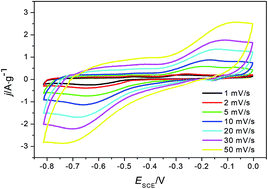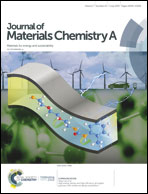Composites of metal oxides and intrinsically conducting polymers as supercapacitor electrode materials: the best of both worlds?†
Abstract
Composite materials combining intrinsically conducting polymers and metal oxides suggested as electrode materials in supercapacitors are reviewed with attention to achieved stability and specific functions and effects both components contribution to the performance of the materials. With this combination, various drawbacks of metal oxide materials frequently suggested as active masses shall be remedied. The low electronic conductivity of metal oxides traditionally ameliorated by adding conducting carbon can be enhanced by intrinsically conducting polymers, but careful consideration of changes of the polymer's conductance as a function of electrode potential is required. An inherently elastic polymer can buffer the volume changes of metal oxides. Loss of active mass, in particular of metal ions, can be prevented by encapsulating the metal oxide in the polymer. Finally, the charge storage capability of the polymer itself can be utilized for enhanced storage in the composite material. Reported materials and preparation procedures are briefly presented; achieved progress as well as remaining challenges are highlighted. Suggestions for further research and development are proposed.

- This article is part of the themed collection: Recent Review Articles


 Please wait while we load your content...
Please wait while we load your content...